That’s the stuff rainy days are made of. We asked chefs and food enthusiasts to share treats they turn to during the monsoon, and it appears that they all love them deep-fried
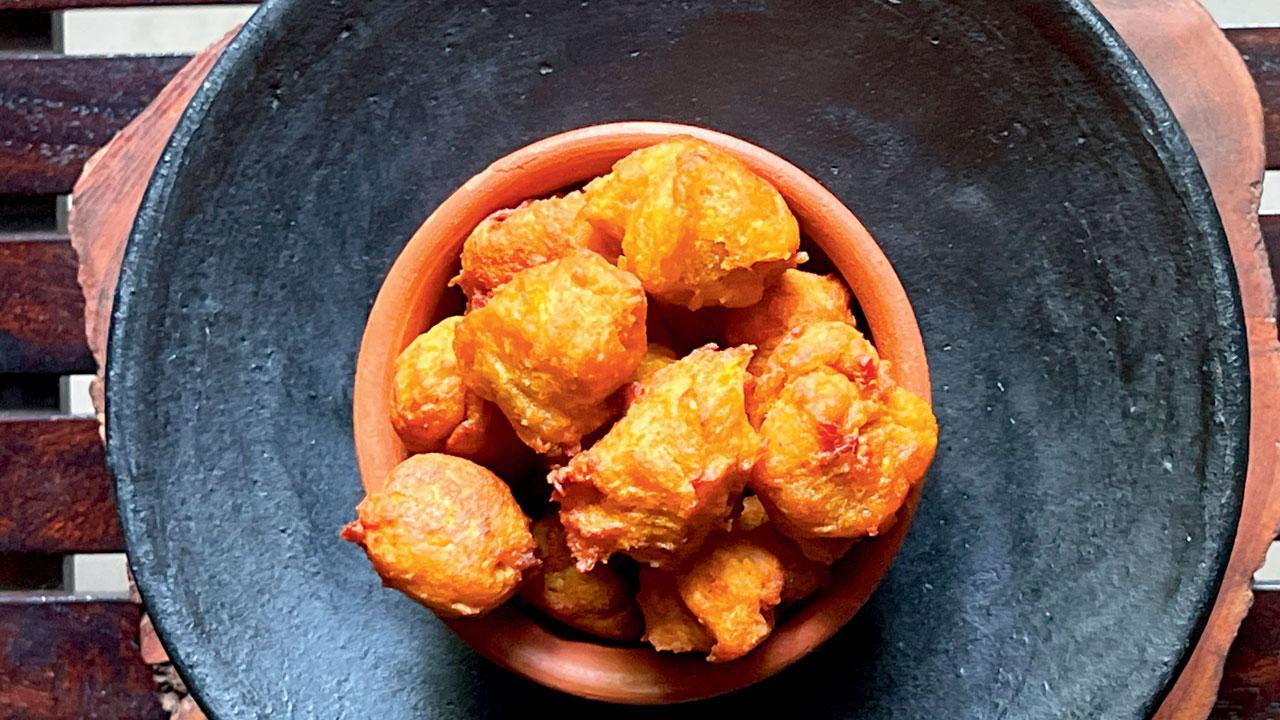
Kohlyache bonde
Two weekends ago, when the capricious rains arrived in Mumbai, and the silent lull of the overheated summer was replaced by the thrumming of water drops, chef Marina Balakrishnan welcomed a bunch of drenched folks to her Chaya Kada pop-up at Unit 27, Shree Laxmi Woollen Mills in Mahalaxmi. The rain was hardly a dampener, she tells us now, with people streaming in and out of her tea stall through the day, scarfing out on hot-off-the-pan achappams and kozhi kaal (cassava fritters), finishing it with garama-garam chai.
ADVERTISEMENT

Balakrishnan, who is the face behind @thatthalasserygirl on Instagram, has Malabar flowing in her veins. For years, she has nursed a dream to kindle a love for the food of her home state Kerala in her adopted city, Mumbai. She sowed the seeds for this with Oottupura, serving home-style plant-based Keralite meals. This monsoon, Balakrishnan brought her food to the streets with Chaya Kada, a project which has been in the making for the last three years. Her next pop-up will be held at the same venue on July 16.
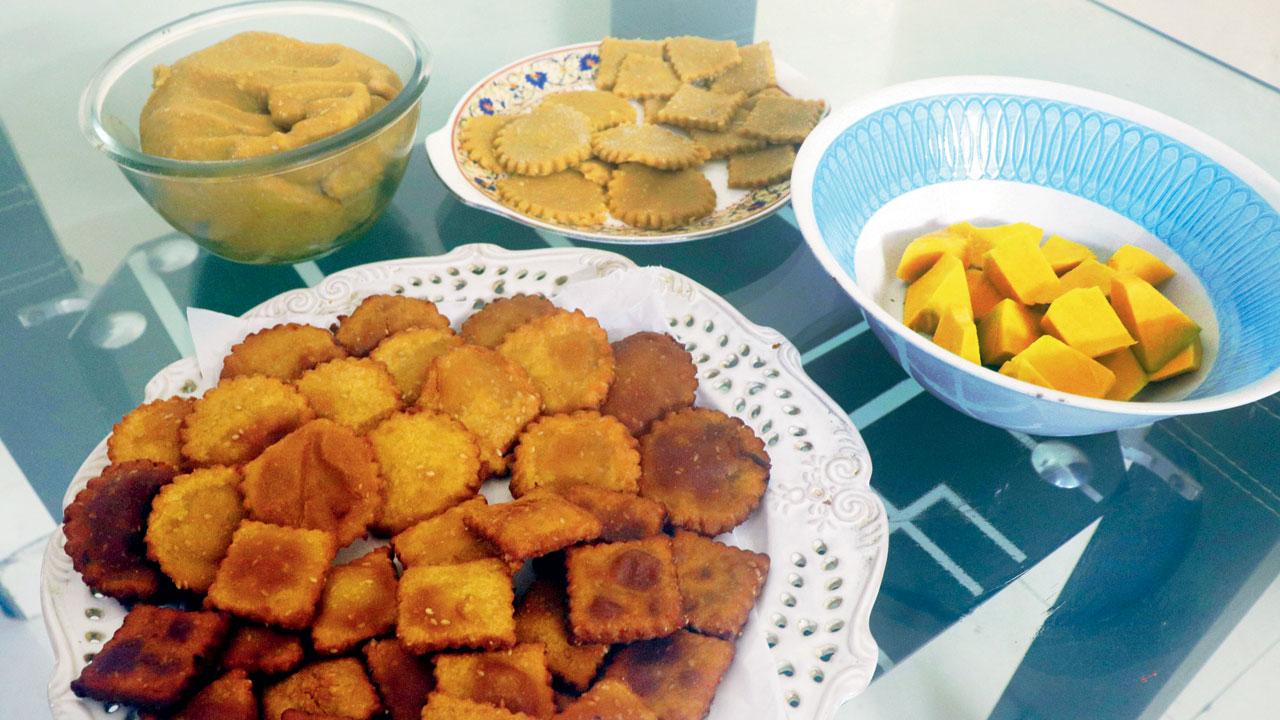
East Indian home chef Sybil Rodrigues makes umber during the monsoon. The deep-fried treat is made of wheat, rice flour, jaggery and ripe pumpkin. Pics/Anurag Ahire
In Kerala, the chaya kada, much akin yet antithetical to Bambai’s chai tapri, is a dug-out for the intellectual and argumentative Malayalee. “It’s a place where people read their newspapers, and talk and debate politics, while endlessly sipping on glasses of chai,” she says. “It’s a culture there.” The heavy downpour during the monsoon months is always a good excuse to stay put at the chaya kada. That also means making sure there’s a lot of food on the table, be it the parippu and keerai vadas, pothi tea cakes, or Balakrishnan’s personal favourite, pazham pori, a sweet banana fritter, that for her, brings back many memories.
The pazham pori is a popular tea-time snack, made with ripe bananas. The 4 pm tea-time palahaaram, says Balakrishnan, is a ritual in most households of Thalassery and Kannur. “Growing up, tea-time every single day included a speciality made at home or a hot palahaaram that would be bought from the nearby chaya kada,” she shares.

Plantains grow by the dozen in Kerala, and hence, make a regular appearance in most dishes, especially in the snacks. For pazham pori, the banana—the nendrapazham variety—is cut lengthwise, and dipped in a batter of maida, rice flour and sugar, before it is deep fried. “It has a crispy outer coating with the fleshy ripe plantain, giving it a tinge of sweetness.” The snack is best served hot.
As a child, Balakrishnan, who was raised in a large family of over 20 people in Thalassery, says her grandmother would make pazham pori at least twice a week. “We would sit on the cold kitchen floor with our small steel plates. While my aunt would be slicing bananas on the side, my grandmother would be working the wood fire. She would very deftly put the bananas inside the batter, and then into the hot cast iron pans. Once they were ready, she’d pile them on a banana leaf,” she recalls, adding, “We’d eagerly wait for her to put them on our plates. They were piping hot, but we didn’t care much. We would polish them off within minutes… I would eat seven at a time.”

Marina Balakrishnan and Swayampurna Mishra
Goan chef Emma Diniz-Ryan’s earliest memories of fried fritters were also courtesy of her grandmum Emeliana. “Despite growing up in the UK, I was exposed to Goan food from a young age, as my grandmother lived with us throughout,” says the Londoner. “Whenever I’d return home from school, she would have filos ready for me. I didn’t know what they were at the time, just that they were delicious and had a distinct sweet flavour, which I now know to be cardamom.” Filos are made of bananas, jaggery, flour, eggs, cardamom and often coconut, and are pan-fried. Needless to say, they are perfect for a rainy day.
Ripe banana is the star ingredient of most monsoon-time fritters, eaten across the country. Shreyas Shetty, who runs the South Indian joint Krishna’s Cafe in Dadar, says that the Mangalore buns sell like hotcakes during this season. A staple in every Mangalorean home, the buns are a popular all-day snack. “If paired with filter coffee, the buns make for a perfect tea-time treat. If had with chutney it can be enjoyed for breakfast; you can also have it for lunch, with a left-over curry from the previous day.” At Krishna’s Cafe, the buns are served throughout the day. A dough made with overripe bananas, plain curd and maida is greased and refrigerated overnight; the dough is then rolled and deep-fried. While the bun has a poori-like texture on the outside; inside, it is soft and chewy like bread, with a delicate sweetness that comes from the ripe banana.
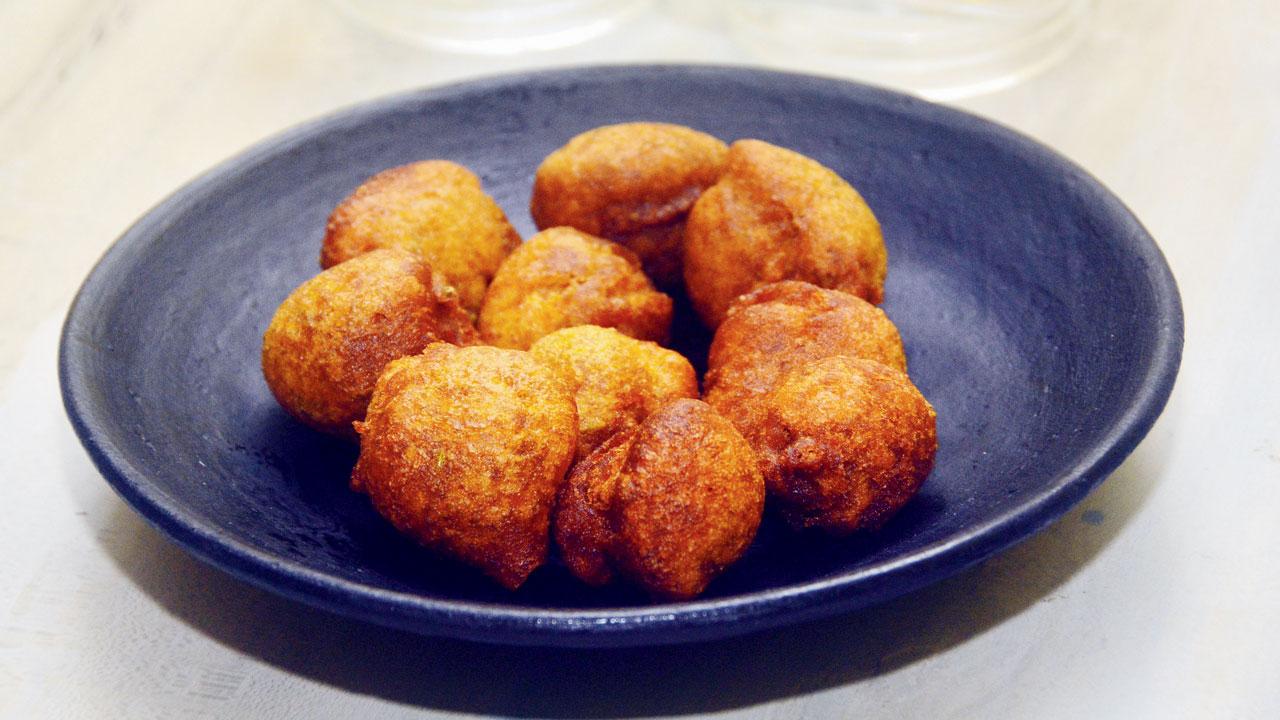
Nerul-based culinary consultant Reetu Uday Kugaji says gulgule, either made plain or with ripe banana, is popular in north India. Pics/Satej Shinde
While one would imagine that the fruit is primarily a southern addition, as it is grown abundantly in the region, up north in Punjab, gulgule, which is made using ripe bananas, makes for a perfect accompaniment with chai on rainy evenings.
Nerul-based Reetu Uday Kugaji, culinary expert and chef consultant says that the deep-fried gulgule is traditionally prepared for karva chauth, and is placed on the pooja ki thaali. It is a constant at every wedding in Awadh, as well. “Punjabi households prepare a batter of a dropping consistency with sieved whole-wheat flour, strained jaggery syrup and crushed fennel seeds; small portions of this batter are deep-fried till golden and crisp in mustard oil,” she says, “Some Punjabis add mashed ripe bananas in the batter along with other ingredients and sugar, instead of jaggery Sometimes, milk is used instead of water.” Kugaji learnt the recipe from her mum who would treat her to the dish on gloomy, overcast evenings. “It would quickly lift my spirits.”
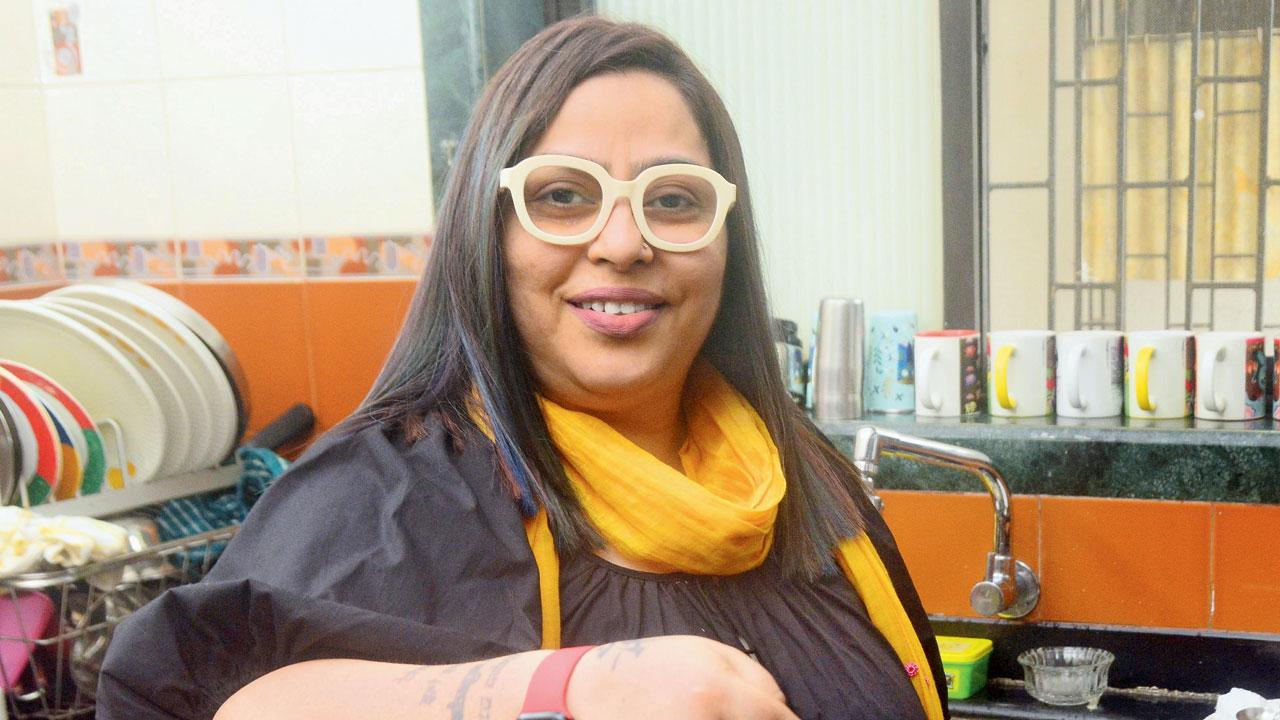
In Maharashtra, Kugaji says that kohlyache bonde (ripe red pumpkin fritters), a dish from the Vidarbha region, is a big hit—“In Nagpur, it’s called kaddu ke gulgule. The sweetness comes from the jaggery and pumpkin; but you have to cook and soften it well.”
Last Sunday, Sybil Rodrigues, a home chef from Santa Cruz’s Kolivery village, and member of the Mobai Gaothan Panchayat, made a batch of umber for her family. An East Indian Catholic, Rodrigues says the dish is not elaborate—the community would traditionally eat what they grew on their farmlands, and their deep-fried treats, while delicious, best represent that. “The is made of wheat and rice flour, jaggery and sesame seeds, and water.” Some add the juice of tadgola or ice apples available during the season, or ripe pumpkin that is boiled and cooked. The dough is rolled into pooris and then fried.
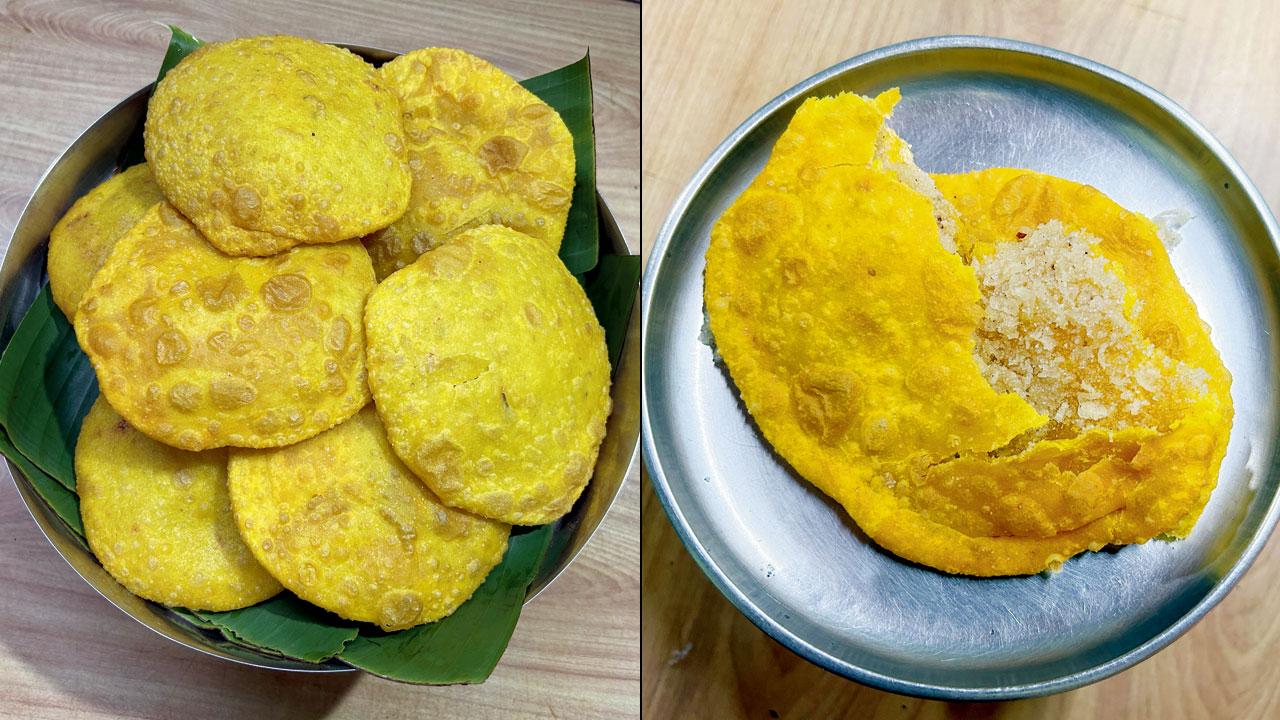
Mangalore resident Louvina Andrade says sanjeera, a crunchy and crispy sweet poori made with semolina, is best enjoyed hot
“They can be stored in airtight jars, but in the rains, it’s delicious when hot.” In Odisha, the suji manda, a popular pitha, which is the common name for sweet breads, pancakes, dumplings and fritters, has the biggest takers this season, says chef Swayampurna Mishra. “This is a suji [semolina] ball stuffed with a coconut, raisins and jaggery.” It can also be steamed, but Mishra says, when deep-fried, it turns nice and crispy. The reason we turn to hot and deep-fried foods, especially during the monsoon, feels Mishra, is simply because our body craves it. “When it is pouring outside, you want to have something warm and comforting.” The more scientific explanation is that the lack of sunlight causes the levels of serotonin—also known as the feel-good hormone—to dip, which in turn increases cravings for carbohydrates. Eating carbs causes a momentary spike in serotonin.
Mangalore resident and food enthusiast Louvina Andrade understands this craving best. Just a stone’s throw away from her home is a small eatery Rajeshwari Bhavan, that’s popular for its sanjeera, a crunchy and crispy sweet puri. “If you are hungry or just low on energy, you should eat this poori. It gives you an instant sugar rush,” she says, “It’s extra perfect in the monsoon, especially with a cup of coffee. You just feel happier, even though it’s not the healthiest sweet around.” The dough is made of maida and very fine suji. “We call it Bombay suji here,” she says. The filling has suji roasted in ghee, sugar coconut, cardamom powder, saffron and fennel seeds. “You have to bunch the stuffing in the dough, roll it out gently and then deep fry it in coconut oil on medium-high heat,” she says. A day after our call, the pouring rain drew Andrade to make a hot batch of sanjeeras. “They turned out super,” she texted. The smiley emojis that followed had serotonin written all over them.
Mangalore Buns
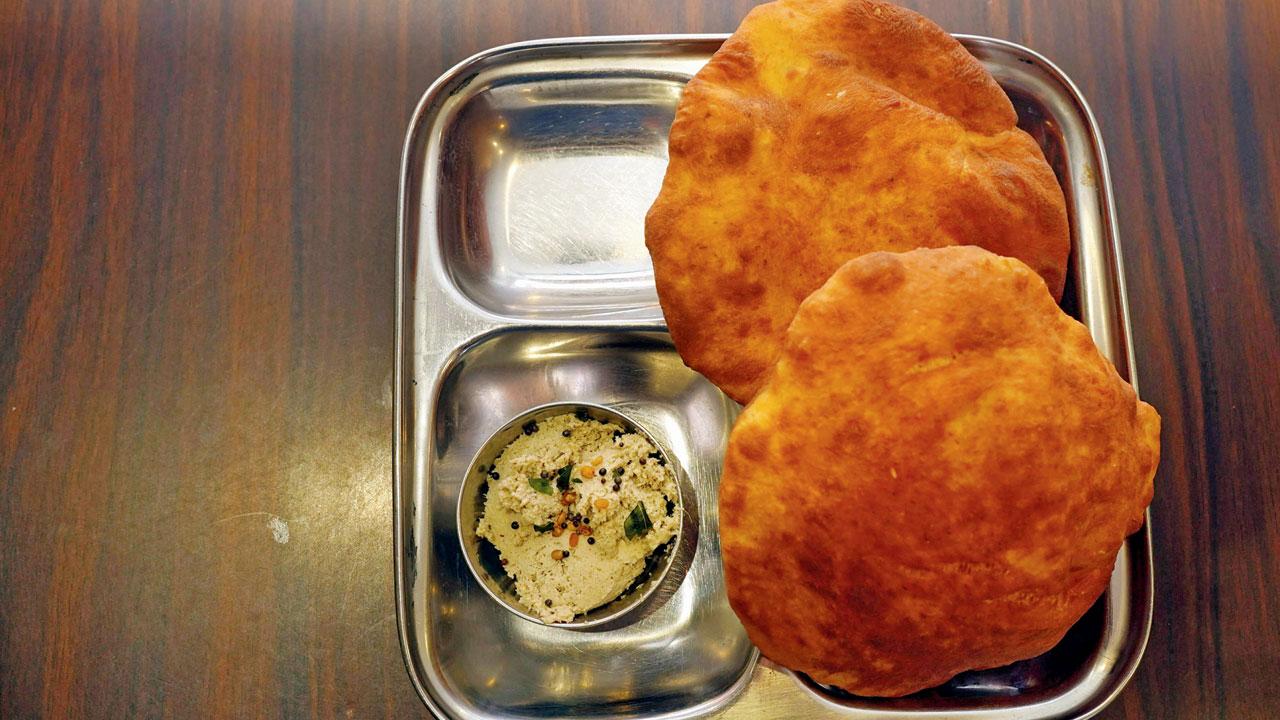
1 overripe banana
1 tablespoon sugar
80 gm of plain curd (should not be sour)
1/2 tablespoon cumin coarsely grounded
Pinch of baking soda
1 cup or 350 gm of maida Oil
METHOD
In a mixing bowl, add banana and sugar and mash it smooth using a fork. Add in the curd, cumin, soda and salt and mix well. Add maida and prepare the dough; knead till smooth. Grease the dough with oil and cover. Refrigerate overnight. Knead the dough lightly, and make six ball-sized portions. Roll it while dusting with maida, ensure it is slightly thicker than a puri. Deep fry in hot oil on medium flame till golden brown and fluffy.
By Shreyas Shetty
Filos
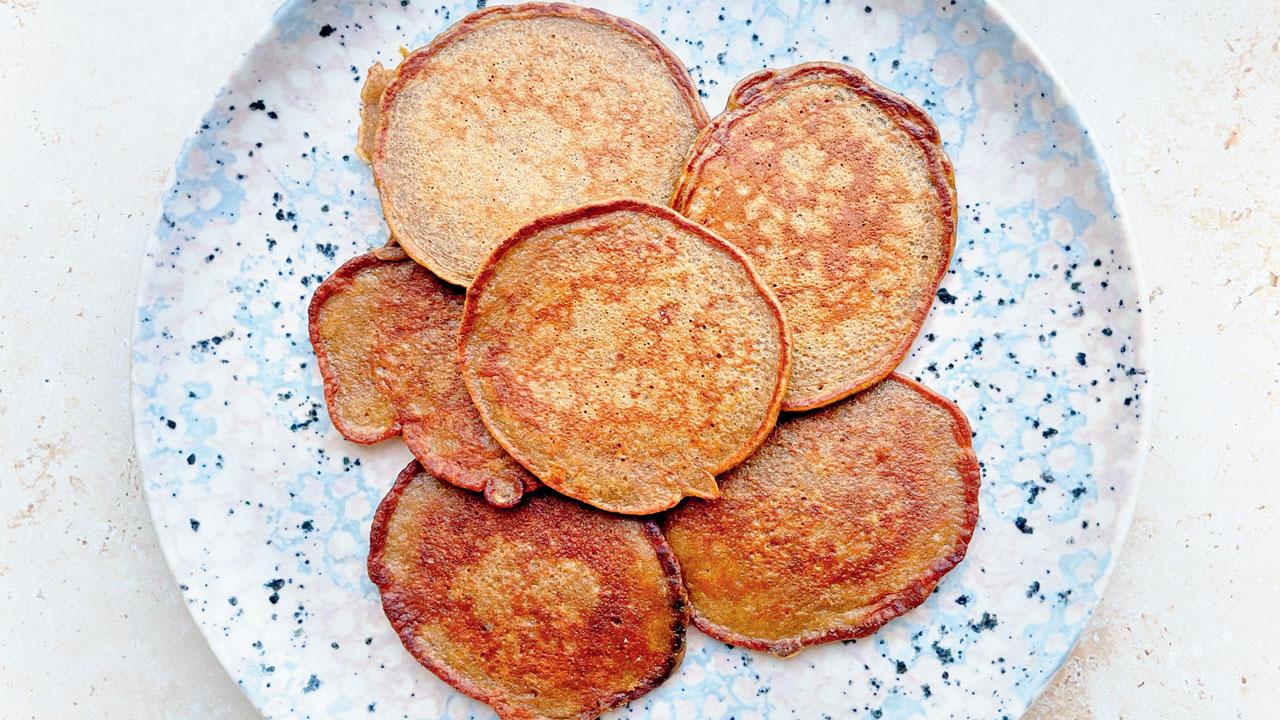
INGREDIENTS
1 egg
1 overripe banana
65 gm sieved flour
50 ml milk
1/2 tsp ground cardamom
30 gm Goan jaggery
Pinch of salt
Coconut oil for frying
METHOD
Heat milk and jaggery/sugar with a pinch of salt in a small saucepan until it melts. Pour into a bowl to cool down. With a fork, smash the banana until it is completely smooth, then add the egg and whisk together thoroughly; add ground cardamom. Add the cooled milk mixture to the banana and egg. Sieve in the flour and whisk everything together. Heat a few teaspoons of coconut oil in a frying pan, and ladle in some mixture to the pan. Cook these for about a minute-and-a-half on medium heat, then flip them over and cook for another minute or so. Enjoy them with a cup of tea.
By Emma Diniz-Ryan
 Subscribe today by clicking the link and stay updated with the latest news!" Click here!
Subscribe today by clicking the link and stay updated with the latest news!" Click here!







